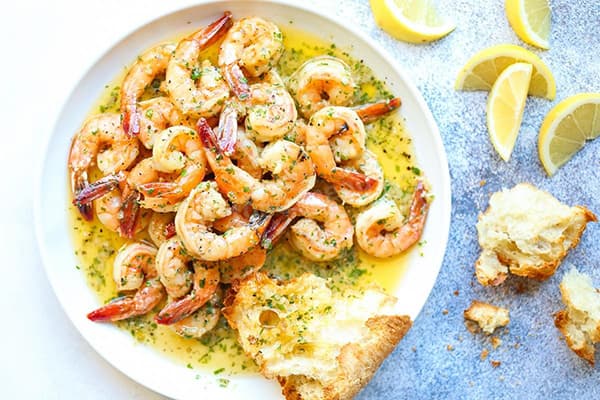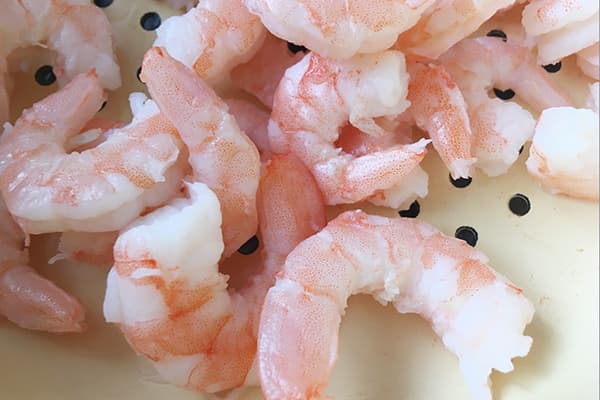Why shrimp turn out “rubbery” after boiling: 4 reasons
You shouldn’t be surprised that the shrimp turned out “rubbery” if they were prepared at random. Even such a seemingly simple product requires a special approach to cooking. We invite you to find out why crustaceans turn out tasteless after cooking and how this can be corrected.

4 reasons why shrimp are “rubbery”
Many people's first experience of cooking seafood is unsuccessful. Therefore, there is no need to be upset. It’s better to find out why the shrimp turned out like rubber:
- They've been preparing for too long. This is the most common reason for the rubbery consistency of shrimp meat. Many are accustomed to reasoning that the longer a product is cooked, the softer and safer it is for consumption. But this doesn't work with shrimp. You cannot cook them for longer than 5 minutes.
- Incorrect cooking technique used. Even if the crustaceans were cooked for a short time, if they were thrown into cold water and not taken out immediately after boiling, they can become “rubbery.” The thing is that the protein in shrimp meat coagulates very quickly. It begins to cook at a temperature of 40 degrees. This is the same reason why shrimp left in boiling water will still cook. As a result, we get a cooking time that significantly exceeds the recommended norm.
- You have already cooked a finished product. Most crustaceans are sold boiled. Fresh shrimp are gray, while cooked ones are pinkish or reddish. They don't need to be cooked at all.It is enough to defrost the seafood and place it in brine (salted boiling water) for 30-60 seconds or heat it in a frying pan with butter.
- The product is spoiled. Old, repeatedly defrosted and frozen shrimp may have a rubbery consistency and an unpleasant taste and aroma. Damage is indicated by a dark spot under the shell in the head area, a straight tail, the presence of a large number of broken antennae, and different sizes of crustaceans in one container.
What to do with tough shrimp meat?
If the shrimp have become “rubbery”, then it will not be possible to return them to softness and tenderness. However, this does not mean that the product should be thrown away. A picky person can eat them in this form. And to serve seafood, it is better to prepare a dish.
What to do if the shrimp turn out rubbery?
- Cut the meat into thin strips and prepare the salad.
- Stew them in cream or sour cream with the addition of herbs, garlic and seasonings to taste.
- Prepare shrimp sauce and serve over spaghetti or rice.
- Fry the crustaceans (peeled) in a frying pan until golden brown and serve as an appetizer.
Rules for cooking shrimp
A bad experience in the form of “rubbery” shrimp meat is a useful lesson for the future. Before boiling crustaceans, you need to familiarize yourself with the nuances of preparation.
In fact, the recipe is quite simple:
- Thaw the shrimp. Wash under running water.
- Pour water into a saucepan and place on fire. The volume of water should be 3 times the volume of shrimp.
- After waiting for it to boil, throw salt and spices into the pan: dill, peppercorns, bay leaf. Next, place the shrimp in boiling water.
- If the crustaceans are boiled and frozen, after 30 seconds turn off the heat and drain them in a colander.Fresh shrimp are cooked depending on size: small – 1 minute, medium – 2 minutes, large tiger and king – 3-5 minutes.
It is advisable to cook shrimp in the shell, so how to peel shrimp It’s easier when they are ready, and also because in the shell the shrimp are better saturated with the sea aroma and spices that are added to the brine. Among other things, the chitin layer protects the meat from excess salt and helps it retain its natural sweetness and tenderness.
When cooked correctly, shrimp meat is juicy, has a pleasant sweetish taste and iodine aroma. Small shrimp are always more tender than large representatives. But it is very important not to overcook them. It is from a long stay in boiling water that crustaceans most often become hard, as if rubber.


They're frozen. And they DO NOT know how to cook them. In the Kuril Islands we simply boiled them in sea water. There was no rubber.
The shrimp are already spoiled, because... there is snow, ice in the bag: the product was stored incorrectly (defrosted)
For ready-made pink shrimp, 30 seconds in salted boiling water is not enough. They won't be salted at all. I just throw the frozen ones into salted boiling water and leave for 15-20 minutes. The water is only 50 degrees. first and then it cools down completely.
What kind of dill, bay leaf, peppercorns? Sea water and NOTHING else!
For those in the tank, they write BOILED-FROZEN shrimp on the bags in big letters... This means that smart people before you cooked them, salted them and froze them. leave it on the table for a couple of hours and eat it. Any heat treatment will automatically turn this delicate product into rubber.
The only adequate comment, the rest saw shrimp only in the picture
It's all very complicated, that's why I don't use it
What does it mean that if you cook it for a long time... it “doesn’t work”?
Have you ever cooked anything more complicated than scrambled eggs in your life? Experts @la...
If you cook shrimp for an hour or more, they become simply soft.
But there’s no point in them after that...
There are many varieties of shrimp. Royal, brindle, etc. We personally like shrimp up to 10-12cm in size. They are juicier. Can be cooked in the microwave in a few minutes. This is how we cook on our travels around Southeast Asia. For marinating we use soy sauce. Naturally, this applies to freshly caught chilled shrimp.
Useful article. Everything is written simply and clearly. Now there will be no problems with shrimps))